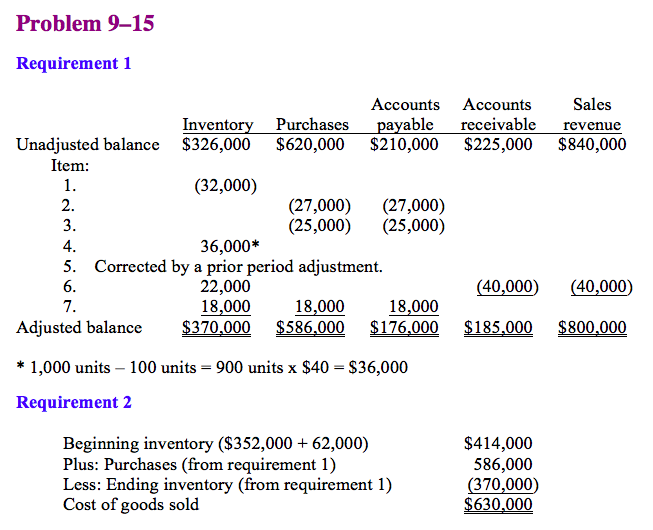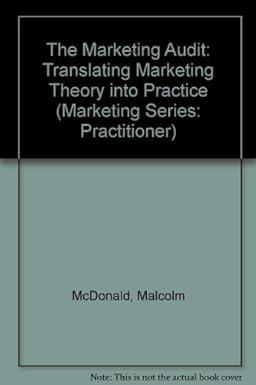Question
Hello, If you could please explain to me in detailed the pictured answer bellow, that would be greatly appreciated. I am having a hard time
Hello,
If you could please explain to me in detailed the pictured answer bellow, that would be greatly appreciated. I am having a hard time deciphering why we add and subtract certain values from the 2016 E.B. -- especially when it comes to transaction 6 and 7. If you could please explain so I may come up with the answer on my own if similar problems were to arise in the future, that would be greatly appreciated.
Capwell Corporation uses a periodic inventory system. The company's ending inventory on December 31, 2016, its fiscal-year end, based on a physical count, was determined to be $326,000. Capwell's unadjusted trial balance also showed the following account balances: Purchases, $620,000; Accounts payable; $210,000; Accounts receivable, $225,000; Sales revenue, $840,000.
The internal audit department discovered the following items:
Goods valued at $32,000 held on consignment from Dix Company were included in the physical count but not recorded as a purchase.
Purchases from Xavier Corporation were incorrectly recorded at $41,000 instead of the correct amount of $14,000. The correct amount was included in the ending inventory.
Goods that cost $25,000 were shipped from a vendor on December 28, 2016, terms f.o.b. destination. The merchandise arrived on January 3, 2017. The purchase and related accounts payable were recorded in 2016.
One inventory item was incorrectly included in ending inventory as 100 units, instead of the correct amount of 1,000 units. This item cost $40 per unit.
The 2015 balance sheet reported inventory of $352,000. The internal auditors discovered that a mathematical error caused this inventory to be understated by $62,000. This amount is considered to be material.
Goods shipped to a customer f.o.b. destination on December 25, 2016, were received by the customer on January 4, 2017. The sales price was $40,000 and the merchandise cost $22,000. The sale and corresponding accounts receivable were recorded in 2016.
Goods shipped from a vendor f.o.b. shipping point on December 27, 2016, were received on January 3, 2017. The merchandise cost $18,000. The purchase was not recorded until 2017.

Required:
Determine the correct amounts for 2016 ending inventory, purchases, accounts payable, sales revenue, and accounts receivable.
Calculate cost of goods sold for 2016.
Problem 9-15 Requirement i Accounts Accounts Sales Inventory Purchases ayable receivable revenue Unadjusted balance $326,000 $620,000 $210,000 $225,000 $840,000 Item: (32,000) (27,000) (27,000) 25,000 (25,000) 36,000 5. Corrected by a prior period adjustment. (40,000) (40,000) 22,000 18,000 18,000 18,000 Adjusted balance $370,000 $586,000 S176.000 $185.000 $800,000 1,000 units 100 units 900 units x $40 S36,000 Requirement 2 $414,000 Beginning inventory ($352,000 62,000) Plus: Purchases (from requirement 1) 586,000 Less: Ending inventory (from requirement 1) 370,000 Cost of goods sold 630,000Step by Step Solution
There are 3 Steps involved in it
Step: 1

Get Instant Access to Expert-Tailored Solutions
See step-by-step solutions with expert insights and AI powered tools for academic success
Step: 2

Step: 3

Ace Your Homework with AI
Get the answers you need in no time with our AI-driven, step-by-step assistance
Get Started


